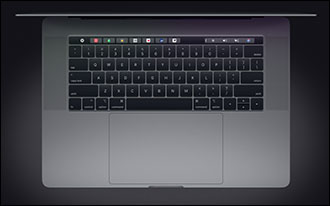Essential Trackpad Tricks For Mac
If you use your MacBook as a desktop replacement, the trackpad soon becomes tiresome. It is great for occasional use or convenient for when you’re on the road, but use it at home and a mouse will soon prove its worth. You can set Mac OS X to automatically disable the MacBook trackpad when using a mouse. Also see our article You should only need to do this once as we configure Mac OS X to disable the trackpad every time it detects a mouse. It will work the same for both wired and wireless mice.

As I’m working with the trackpad, I will also show you how to reverse it, just in case you prefer working that way. Disable MacBook trackpad when using a mouse Until something better comes along, a mouse is the best way to control any computer over the long term. Spend a few hours on your MacBook and the trackpad soon becomes very tiresome to use. A good Apple mouse is comfortable for much longer periods and is the way to work I think. To disable the MacBook trackpad when using a mouse:. Select the Apple logo in the top left and then System Preferences. Select Accessibility and then Mouse & Trackpad.
Check the box next to ‘Ignore built-in trackpad when mouse or wireless trackpad is present’. Now when you connect a mouse to your MacBook, MAC OS X will automatically disable the trackpad until you remove the mouse.
Why this setting isn’t under mouse or trackpad I do now know but there it is. Reverse the MacBook trackpad Ever since ‘Natural Scrolling’ was introduced back in the days of Lion I have had to reverse the trackpad.
I use both Apple and Windows and leaving Natural Scrolling enabled means I not only have to switch OS in my tiny brain, I also have to scroll in a different direction. Apple only users may not have an issue but IT techs like myself do. Fortunately, you can reverse the setting so it works a little more like other OS. Select the Apple logo in the top left and then System Preferences. Select Trackpad and Scroll & Zoom. Uncheck the box next to ‘Scroll direction: natural’ at the top of the window.
Now, when you scroll towards you on the trackpad, the screen scrolls down. Scroll away, the screen scrolls up. Troubleshooting the MacBook trackpad If your MacBook trackpad isn’t working or stops working properly for any reason there are some basic troubleshooting tips that might get it working again. Reboot your MacBook A full reboot is always the first thing I suggest doing on any computer to repair a software glitch.

Mac Trackpad For Windows 10
A multitude of errors can happen when an operating system is loaded and running and a reboot can fix most of them. Unplug any mice you have connected, reboot your MacBook and retry. Chances are if nothing is broken the trackpad will now work normally. Check for system updates System updates also include firmware and driver updates which can fix all kinds of issues. Microphone to usb.
If a reboot didn’t fix the trackpad make sure your OS is fully up to date and running the latest drivers. Go to the App Store or look for Update notifications on the desktop. Check for Updates manually if you don’t see an alert. Check the trackpad settings If you have made any of the changes listed above to turn off the trackpad or to use a mouse, make sure the mouse has been disconnected and/or turn off the setting.
It is easy to forget to turn off a Bluetooth mouse or unplug a wired one. Revisit the settings above and uncheck the box next to ‘Ignore built-in trackpad when mouse or wireless trackpad is present’. Retest the trackpad and try another reboot just in case. Delete the Property List Deleting Property List files is a step of last resort but if nothing else has worked you may have no choice.
Property List files are a collection of user settings that control how your MacBook works. Any customizations you make are stored here and that includes input and trackpad. Deleting them without backing them up will return many of those customizations back to defaults so back up first. Use Time Machine to perform a system backup. Then navigate to /Library/Preferences. Delete the following files from the Preferences folder:.
apple.AppleMultitouchTrackpad.plist. apple.driver.AppleBluetoothMultitouch.trackpad.plist. apple.driver.AppleBluetoothMultitouch.mouse.plist. apple.driver.AppleHIDMouse.plist.
apple.preference.trackpad.plist Once deleted, reboot your MacBook and retest. If it was an errant setting or error, your trackpad should now work normally again.

If you need to disable the MacBook trackpad, you now know how. Got any other trackpad tips or tricks we should know? Tell us about them below if you do!